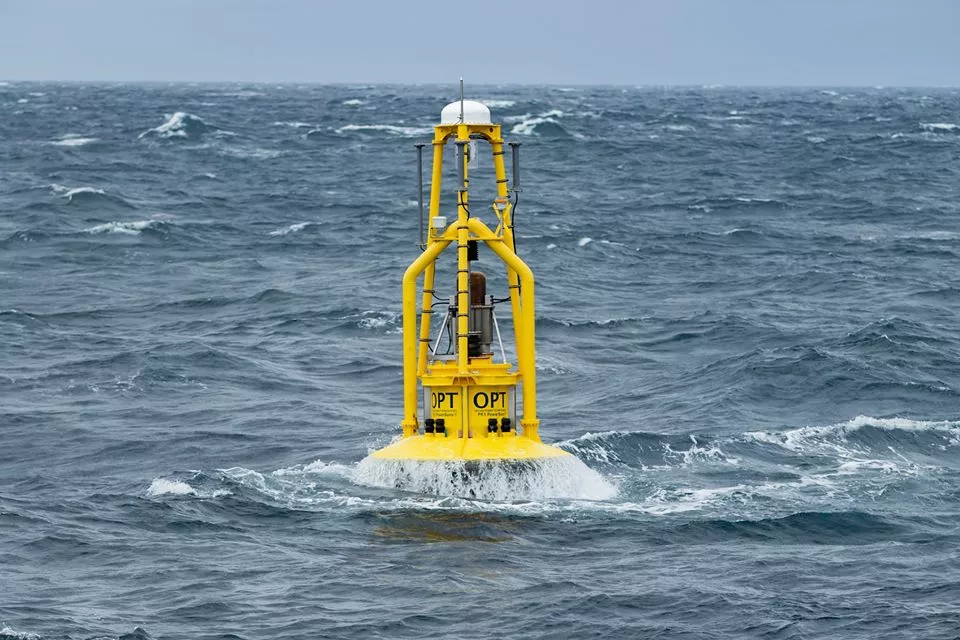Although autonomous underwater vehicles (AUVs) are electrically-powered, they're typically launched from fuel-burning surface support vessels. A new system is being designed to replace those ships with more environmentally-friendly wave-powered underwater AUV stations.
Officially known as the OPT-Modus-Saab Seaeye Subsea Vehicle Residency Solution, the setup is based around an OPT PowerBuoy made by New Jersey-based Ocean Power Technologies. Anchored to the seabed and floating at the surface, the device generates electricity via a piston-like structure located below the surface. That structure rises and falls as the PowerBuoy bobs up and down with the waves, driving a generator.
In the new system, a subsea cable running down from the buoy will deliver power and communications data to a seabed-located battery/docking station made by Modus Seabed Intervention.

A Saab Seaeye Sabertooth AUV will autonomously make its way to that station between missions in the region. Once docked, it will recharge its batteries, plus it will send and receive data (via the buoy) to and from its shore-based users.
Ultimately, the technology could find use in applications such as long-term environmental monitoring, frequent subsea equipment inspections, and interaction with seafloor assets. The concept has been jointly submitted by the partnering companies, for consideration by the US government for developmental and demonstration project funding.
"It is believed that the OPT/Modus/Saab AUV Residency System will boast substantial environmental, risk, safety, and cost benefits over incumbent fossil-fuel powered solutions," Ocean Power Technologies states in a press release. "This system is novel because it’s truly autonomous. Removing vessels and umbilical links to fossil fuel generation drops carbon emissions and relocates personnel onshore, cutting risk and costs while increasing safety."
Source: Ocean Power Technologies





